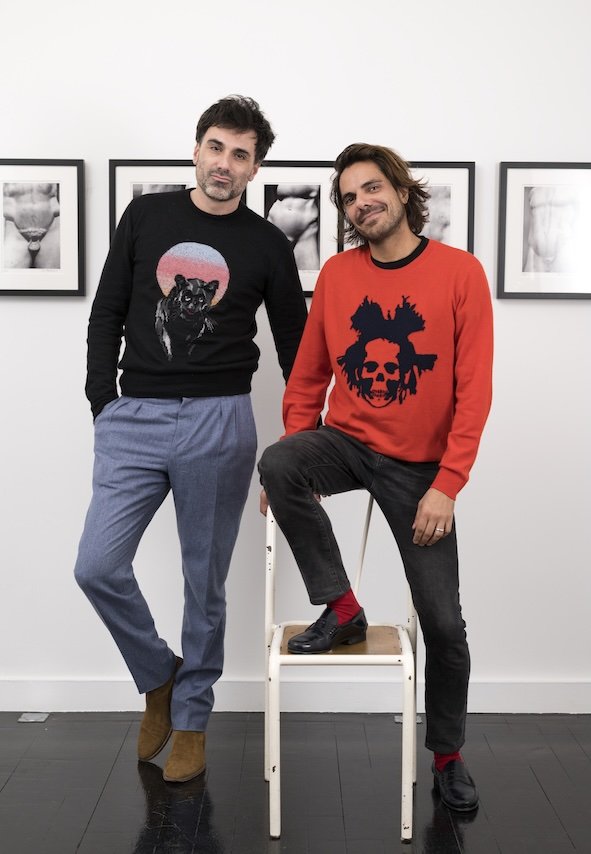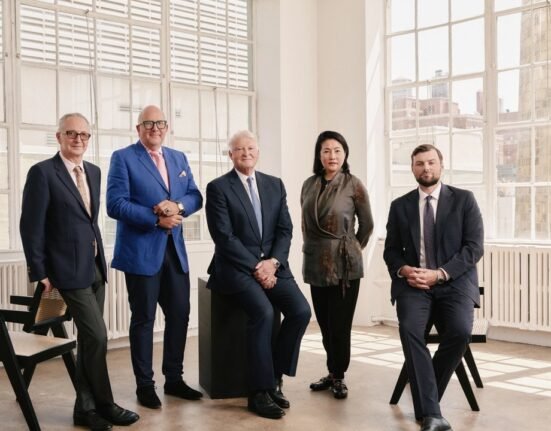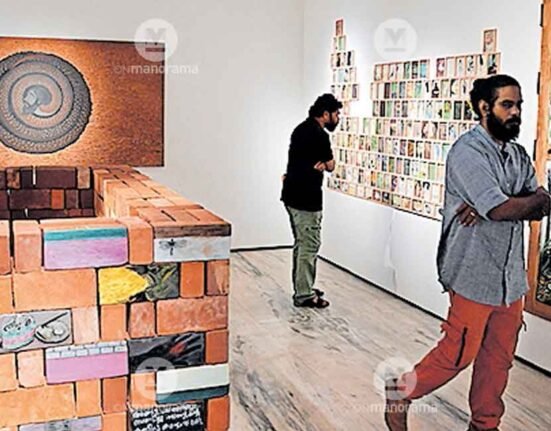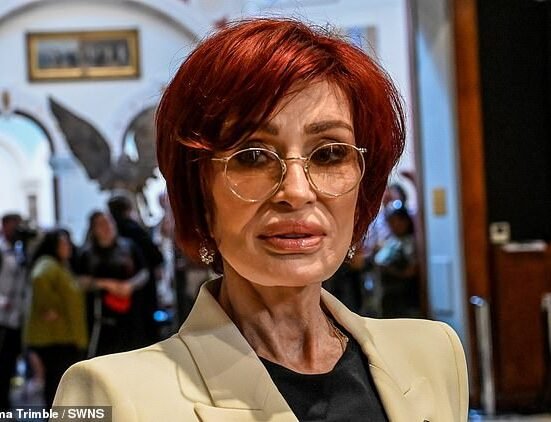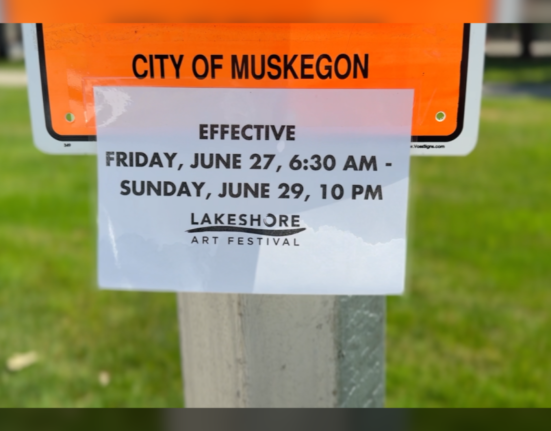In the heart of the Marais, Kader Attia’s kinetic sculptural installation is gently undulating with haunting synchronicity. It has been a decade since the conceptual artist has had a commercial gallery show in Paris, where he was based for many years, and where he co-founded La Colonie, a discursive space and agora that focused on topics around colonialism. This latest installation, part of his solo show, “Pluvialité,” inaugurates Mor Charpentier’s newly opened location.
The duo behind the French outfit, which turns 15 next year, are Alex Mor and Philippe Charpentier. They had been searching for a larger space for a long time, prompted by the need to adjust to the evolution of their artist’s careers and to find the right fit for Attia’s work in particular. “Our artists are growing, as we are,” said Mor, who added that it would have been impossible to show work like Attia’s in their former space due to the scale of the piece, which had been on view at the artist’s Montpellier retrospective that closed in September.
The news of their expansion is a rare one among news of many closures of galleries of their size and age in recent months. We spoke some days after the gallery had held its opening ritual in the new gallery; a private “cleansing rite” for both the space and its souls, according to Mor. There was a sound bath by Guadalupe Maravilla and Charwei Tsai offered a mantra ceremony. Then, they went to Bogotá for ArtBo, where they opened an exhibition by Daniel Correa Mejía. Mor was fixing the lighting at Frieze on the eve of the VIP opening when we chatted. He will take a day off sometime soon, he said with a laugh.
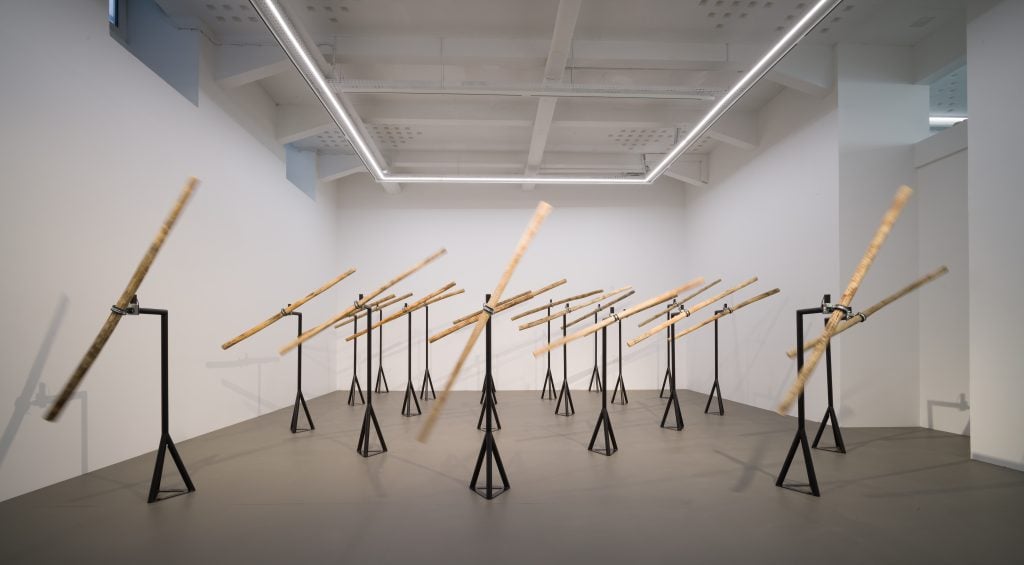
Installation view Kader Attia. Courtesy mor charpentier, Paris and photo by François Doury.
“Fairs are important because they offer new gates for us,” he said, noting the diversity of collectors at events in London, including those who come from Commonwealth countries like India and Pakistan, many of whom don’t make the trek to Paris, even if it is just across the English Channel. “And in Latin America, our client base may not have the supposed financial power of the base in Europe, but they are very active.” Conceptual and political art can be a hard sell, but he noted that it can be easier among Latin American clientele as the public has a more ready understanding of it. “As some of the doors may shut in Europe, where it is more difficult now to sell this kind of work, in Latin America and in the Middle East, the door is still open.”
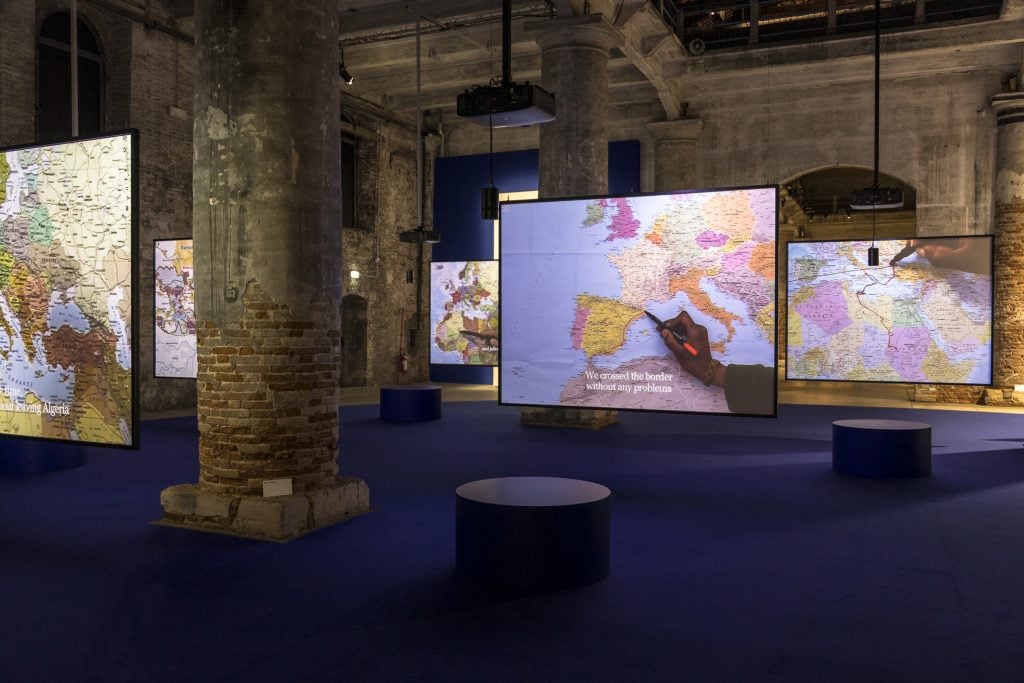
“The Mapping Journey Project,” (2008-2011). Video installation, 8 single-channel videos, color, sound. Photo: _MZO: Marco Zorzanello Courtesy: La Biennale di Venezia and the artist
Expansion Through a Contraction
Mor and Charpentier are long-term partners in both the personal and business senses; they began the gallery program on a powerful footing back in 2010, presenting the Colombian artist Oscar Muñoz. Art and collecting, to varying extents, were key parts of their own upbringings, and so the impulse to start a gallery was a natural one.
They showed artists like Teresa Margolles, the Mexican conceptual artist and photographer, and began working with artists like Lawrence Abu Hamdan when both were still in the younger phases of their careers. “We’ve never been a fashionable gallery, we have been doing this program in this way for a long time,” Mor told me. “The growth as such has been very organic.”
A common thread that connects their diverse and global roster is a strong interest in politics, with special attention to topics and artists looking at or from Global South, although they started staging shows on this topic before it became the widely used curatorial term it is now. Political discourse is a key part of the practices of their artists, like Bouchra Khalili, who presented the multiscreen The Mapping Journey Project (2008–2011) at the Venice Biennale this year (on view until November 24), or in the sound-based work of artist Abu Hamdan. Mor Charpentier’s team has expanded to nearly 15 members between their two hubs in Paris and Bogotá.
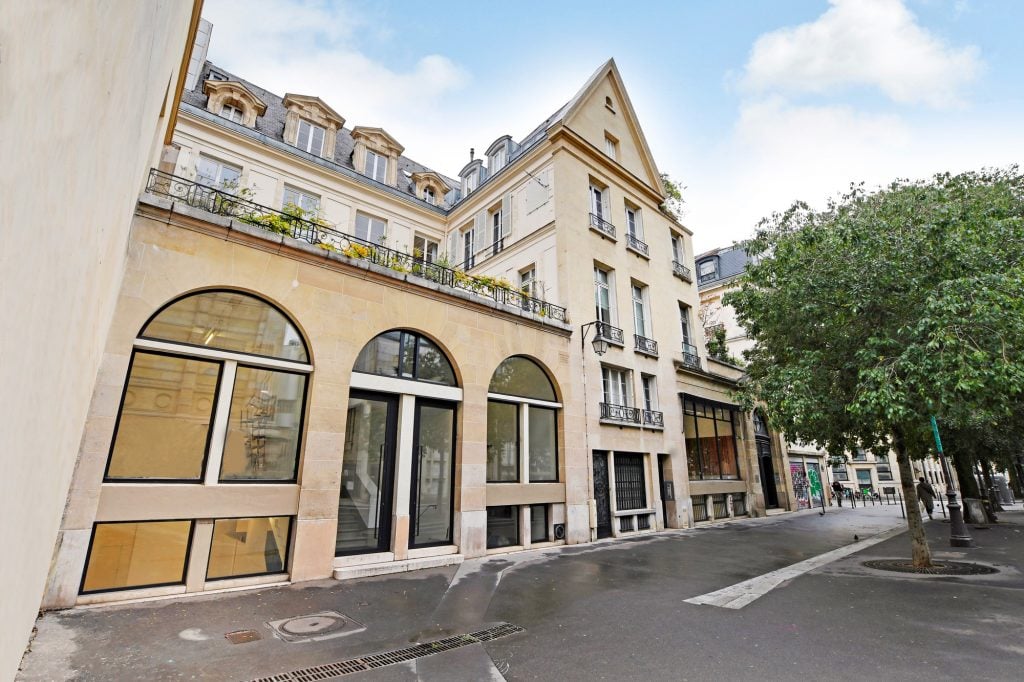
Exterior of the gallery. Credit: Courtesy mor charpentier.
It may seem like a surprising time for a gallery to expand further. With multiple wars intensifying, a high-stakes U.S. election looming, and a pervasive sense of insecurity, uncertainty dominates the current landscape. The art market is struggling alongside that: sales for ultra-contemporary work at auction, meaning the younger set of artists born after 1974, is down 39 percent, year over year. And the dip so far in total sales generated by the big three auction houses—Sotheby’s, Christie’s and Phillips—is down 29 percent compared to last year. There has been a string of gallery closures in many global art hubs this year, and more are expected—Paris has been no exception. Fitzpatrick Gallery, headed by Robbie Fitzpatrick, a founder of the beloved Art Basel Social Club, announced last week that the gallery was turning to a “nomadic” approach, effectively closing its Paris location. And Gb agency, a gallery that had been active in Paris for 20 years, representing artists like Omer Fast, also shuttered. (Mor Charpentier has taken over their former space.)
The challenging environment makes their expansion quite the exception, which is not something they relish. “We are not growing to show off, and our artists are not showing off either,” said Mor. It may be that their institutional focus has inadvertently shielded them in a very hostile art market. They may not have experienced quite the same froth in the past years with market stars (they only started working with painters three years after opening), but that may mean that they are somewhat insulated from sudden market downturns in speculative buying.
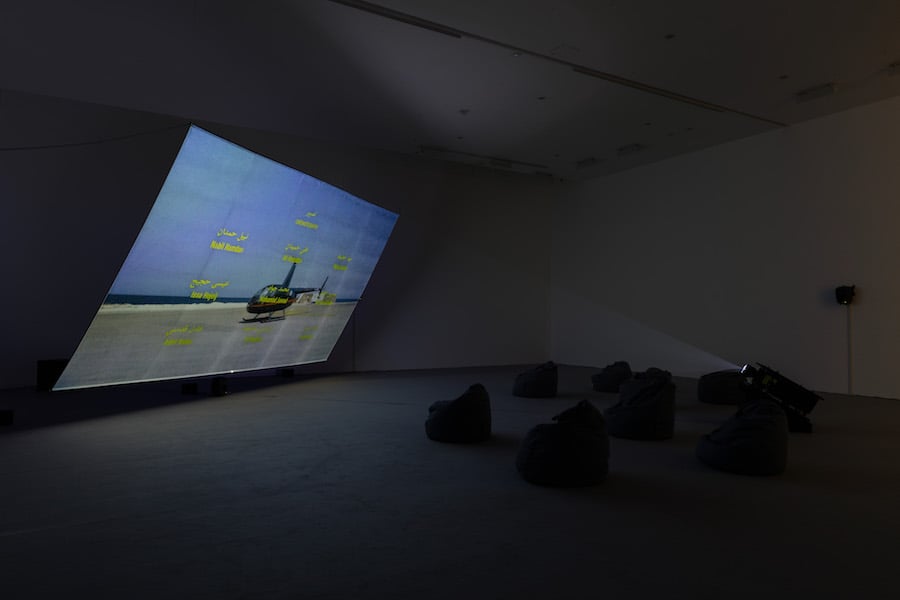
Air Pressure “A diary of the sky.” Lawrence Abu Hamdan. Installation view Fondazione Sandretto Re Rebaudengo. Photo: Sebastiano Pellion di Persano
“The market is challenging and more difficult, and there are collectors who, for different reasons, have stopped or slowed down,” he said. “But since day one, our program has not been about chasing trends, we are also rather safe. Many of our artists are again in a lot of different biennials, which gives confidence to collectors and others who may not be familiar with their practices to take a chance and follow these artists’ evolutions.”
Their collector base has been changing and adapting as they have grown and evolved, though they maintain a faithful French collector base. Patrizia Sandretto Re Rebaudengo is one of those collectors that has been following their program for quite some time. Beyond its “coherent and distinct program,” she said she is “particularly drawn to the fact that many of their artists are activists and investigators,” citing Abu Hamdan, to whom the Philadelphia Museum of Art and Fondazione Sandretto Re Rebaudengo awarded the Future Fields Commission in Time Based Media. She is also planning an exhibition with Marwa Arsanios, at her Turin foundation next year.
“Through their works, these artists offer profound insights into contemporary issues, encouraging us to reflect on the present and collaborate toward building a more inclusive and just future,” Re Rebaudengo said.
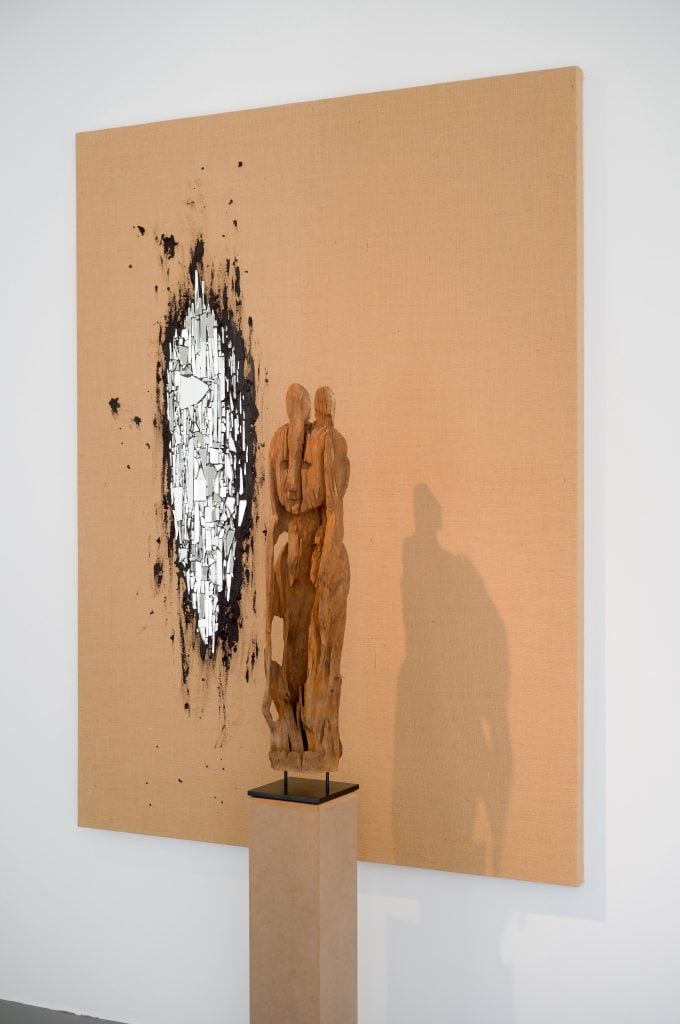
Courtesy mor charpentier, Paris and photo by François Doury.
In 2022, critic Ben Davis and I did a deep data dive looking at the overlooked artists (and their dealers) who were not stars of the art market, but the stars of the biennale circuit. The results were surprising and revelatory—there was virtually no overlap between the world. Mor Charpentier represented more than a handful of those at the top of our list in the biennale sphere, including Abu Hamdan, Uriel Orlow, Attia, and Marwa Arsanios.
“We do not have crazy rising prices; our prices are according to their institutional level, their presence in key collections,” Mor told me in our recent call. “But they are not the stars of the auction, they are in the history books. It is different and it is different work.”
It often takes longer to conceive of and sell the work, but this is a much more sustainable path. “A lot of artists who were auction stars for six months, no one recalls them,” he said. “We don’t work that way,”
A Changing Paris
That is not to say that it’s been easy. Galleries like Mor Charpentier are now vying for attention in a rapidly crowding Paris scene. Since Brexit, blue-chip galleries like David Zwirner, White Cube, and Hauser and Wirth have expanded into Paris. But as many aware of the Paris market will tell you, it is not like a bunch of collectors also moved here alongside them. While there may be wealthy Lebanese foreign nationals or Americans with a pied-à-terre here and there, it is not quite an international hub in the way London is.
“The French market is a steady one, but it is not a big market,” said Mor. “Paris has mega collectors, but they do not feed the entire system. So that is the challenge: there are more competitors. They are strong and amazing galleries doing amazing work, but the cake was already small, so now it is getting smaller.”
The mood is overall optimistic. “Institutionally, Paris is stronger than ever,” said Mor. “There is a question of attitude that has changed. For a long time, everyone was saying that Paris is sleepy, and the shows there were not doing anything new. I think that perception has really changed.” Another thing is that, while collectors may not be moving in permanently, artists are increasingly staying in the city, a noted change after years of seeing an outflow to cheaper creative hubs like Berlin or Lisbon.
In a time of increased digitization, thinking about the local community, the collectors, curators, and artists that are here, is a key motivation for creating an expanded gallery viewing experience. “You have to find solutions to keep attracting people that might be blown off track by new proposals here coming from abroad,” said Mor. “You have to be clever.”
Mor Charpentier is located at 18 Rue des Quatre-Fils, 75003 Paris.

